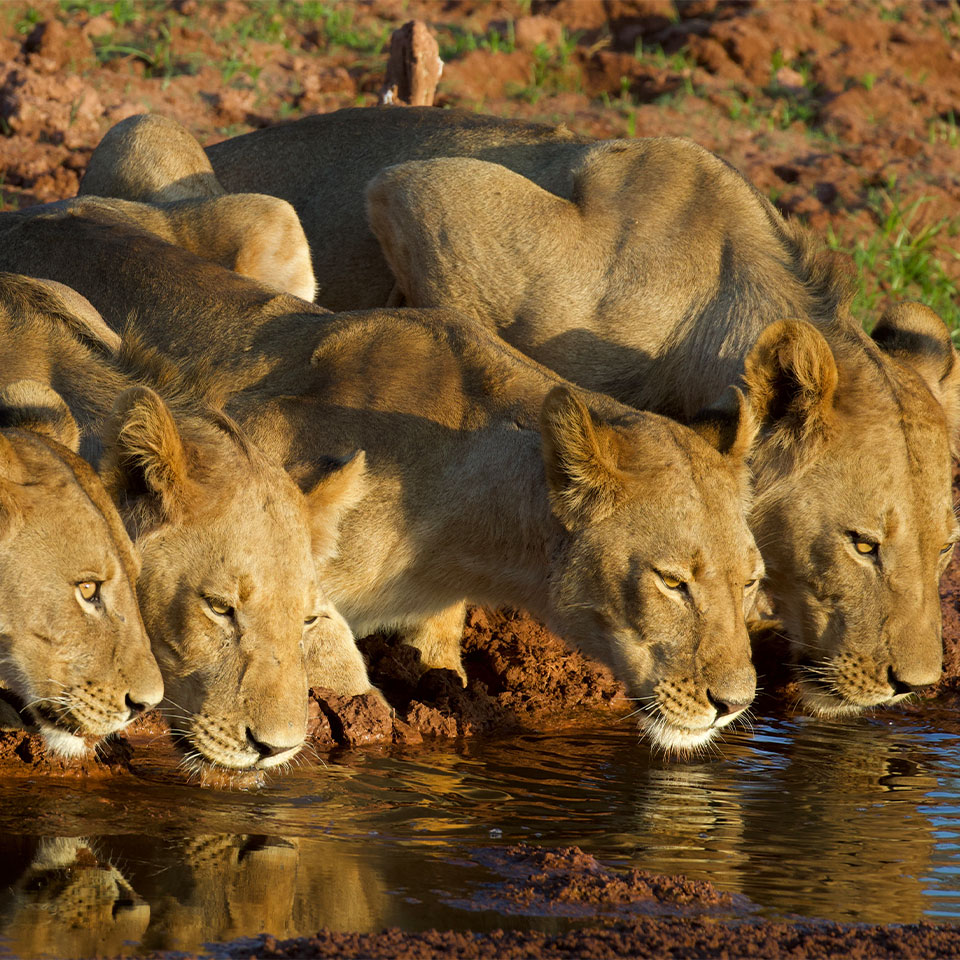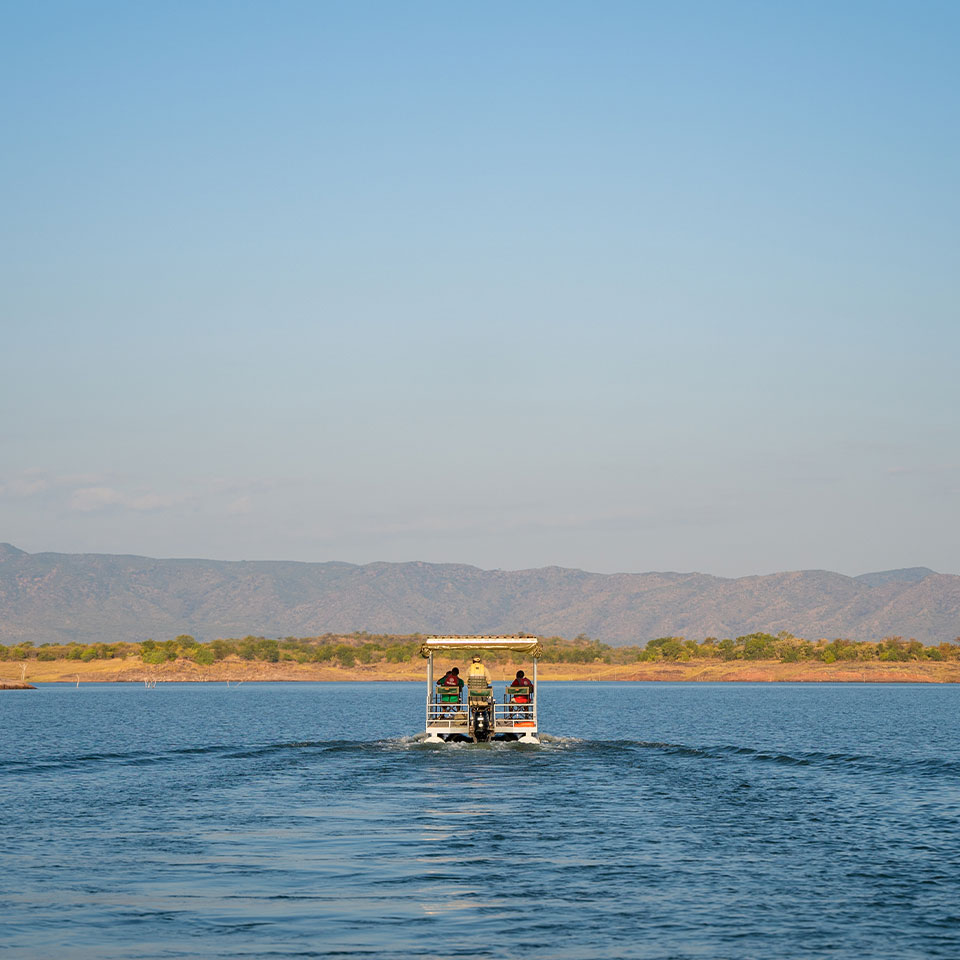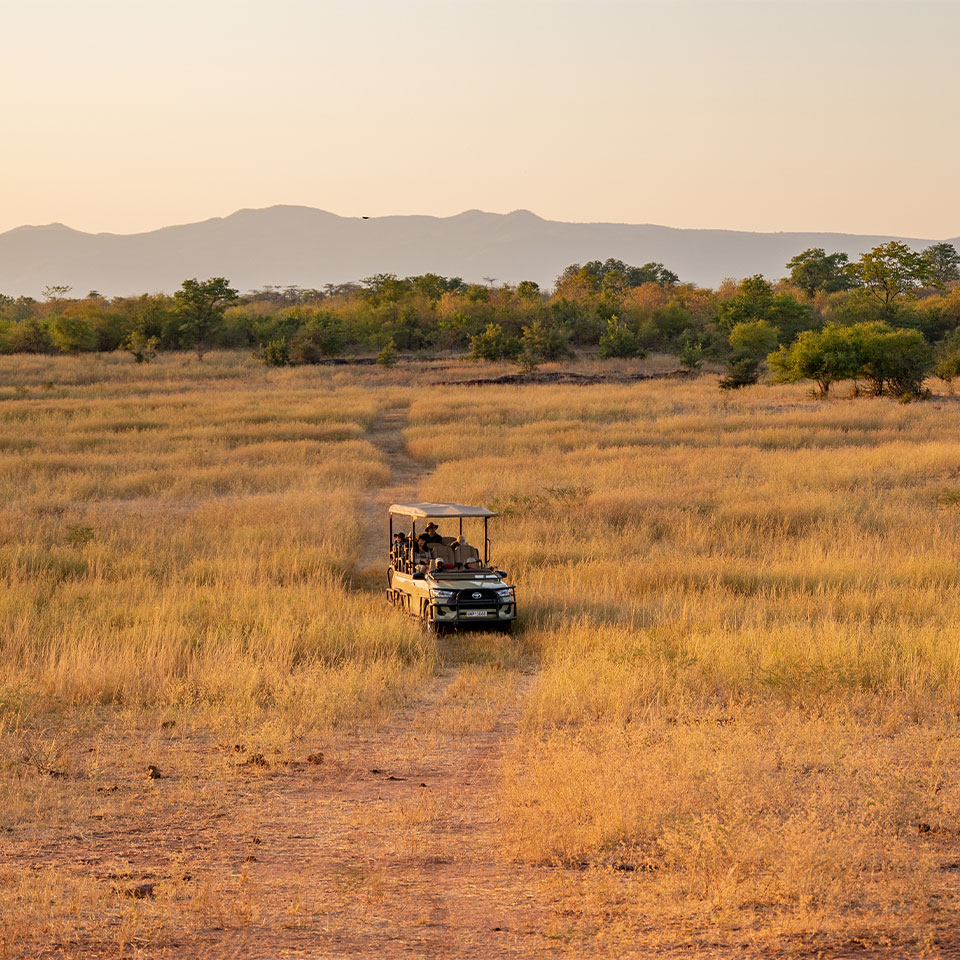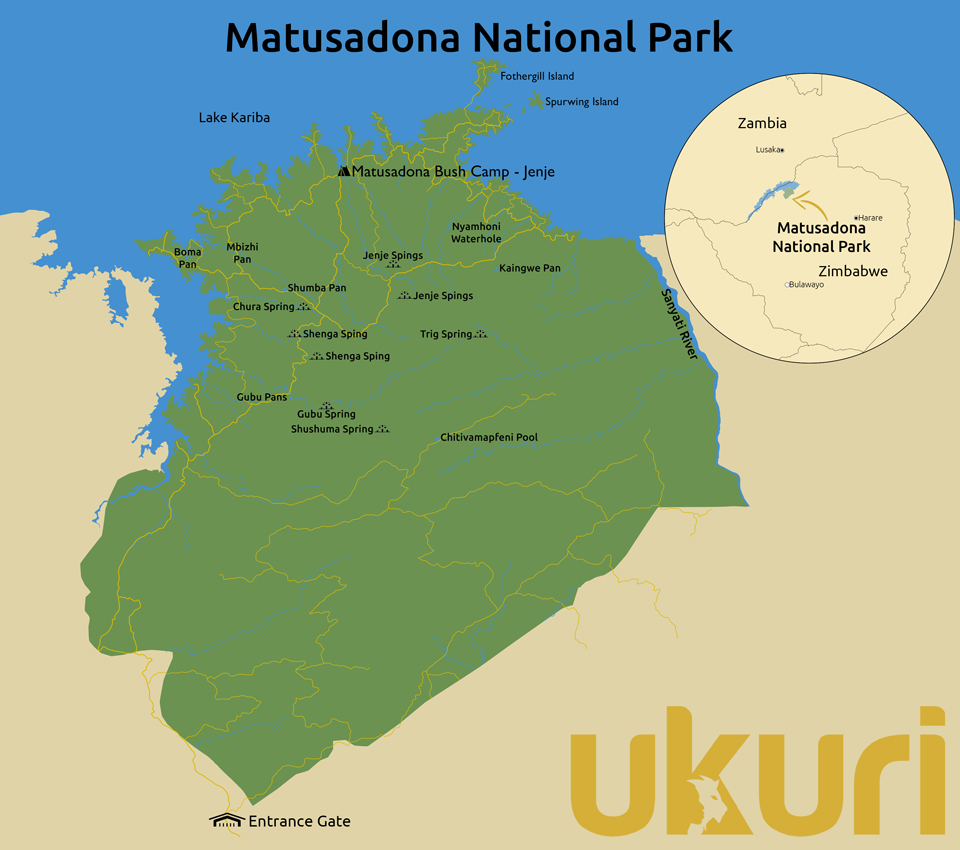SAFARI CAMPS for responsible travellers
The preferred booking platform for lodges & bush camps that offer tangible, measurable benefits for conservation & communities
Matusadona National Park lies on the southern shore of Lake Kariba in northern Zimbabwe, consisting of over 1,400km² (140,000 ha) sandwiched between the Sanyati Gorge to the east and the perennial Ume River to the west.
The park’s character is defined by its magnificent scenery imparted by an unusual combination of engineered geography and natural geology. The vast Lake Kariba and floodplains of rich grasslands rapidly give way to the steep wooded slopes of the Matuzviadonha Mountains. These mountains form part of the undulating Zambezi escarpment and tower some 700 metres above the Zambezi Valley floor, dominating the park’s southern horizons.
The name “Matusadona” derives from a colonial mispronunciation of “Matuzviadonha”, which, in turn, roughly translates to “fallen dung” – probably a reference to the region’s longstanding status as an elephant paradise.
Elephant paradise on Lake Kariba's shores
Information about Matusadona

Matusadona wildlife
Four of the Big 5 - elephant, lion, leopard and buffalo.
Wild dog, cheetah, hyena, giraffe, waterbuck, zebra, roan, sable, eland, hippopotamus, crocodile, warthog, impala and kudu.
Smaller species include side-striped jackal, honey badger, serval, aardvark, pangolin, chacma baboon, vervet monkey, African clawless otter and several species of mongoose.
Birds - 353 species recorded, including secretary bird, crowned eagle, African grass owl, southern ground-hornbill, Nyasa lovebird and western banded snake eagle

Matusadona seasons & landscapes
Open all year round;
The dry season, from April to October, is the best time to visit Matusadona. As the smaller pools and rivers begin to dry up, animals are drawn to the edge of Lake Kariba, setting the scene for some spectacular sightings. Temperatures can top 40°C in September and October.
The rainy season, from November to March, offers the rugged beauty of the green season. While temperatures are still high, migrant birds arrive, and baby animals are everywhere. The gathering of cumulonimbus clouds over the lake offers the chance for some breathtaking photography.
Lake Kariba's water levels have a tremendous cyclical effect on the life surrounding it. On its banks, nutritious grasses flourish during periods of low water, providing a multitude of herbivores with abundant grazing. Away from the floodplains, the thick mopane and Combretum woodlands of the Zambezi Valley floor host the park’s browsers.

What to do in Matusadona
Matusadona offers the following activities:
1 - Game drives
2 - Bird watching.
3 - Bush walks - as an optional extra activity, subject to the availability of a professional walking guide
4 - Lake Kariba boat cruises and catch-and-release fishing
5 - Visit paleontological sites, offering insights into ancient life and local Tonga traditions.

How to get to Matusadona
Nearest city + major airport: Kariba town is the most accessible town for access to and from Matusadona.
By road: The 370km road trip from Kariba town to Matusadona takes six to seven hours. Harare is about 440km, or about seven to eight hours, from Matusadona.
By air: There are various airstrips in the national park - Rukare, Kanyedza & Tashinga
By boat: Matusadona is about 50km (one hour) by boat from Kariba town

Health essentials
Malaria area: Yes
Matusadona is a malaria area, especially during the rainy season. Please consult your travel doctor about malaria prophylaxis.
Yellow fever area: No
Zimbabwe is not a yellow fever country, and vaccination is not required. Vaccination is required for travellers arriving from countries with a risk for yellow fever virus transmission. Please consult your travel doctor before travelling for relevant updates.
Tsetse flies: Yes
Tsetse flies can be a problem in certain parts of the park. Tsetse flies tend to be attracted to dark colours such as bright blue and black, so visitors should wear khaki and lighter colours and make use of insect repellents.
Medical emergencies
Matusadona is a remote area - please ensure you have evacuation insurance in case of medical emergencies. African Parks utilises the following emergency evacuation service: SATIB24 / ART24 (African risk transfer).
✔️ Vested communities ✔️ Responsible & sustainable
100% of tourism revenue earned by African Parks goes to conservation and local communities
Make a difference for local people
Visiting the African Parks camps in Matusadona is the most direct way to support local communities because these camps help boost:
protection against human-wildlife conflict for people living near Matusadona via providing canvas bomas, chilli growing and the use of chilli oils to deter wildlife;
sustainable enterprise development - honey production, sewing groups and chicken farming projects are providing an alternative to dependence on park resources. With revived fish stocks, the legal fishing camps are beginning to see the direct benefits of sustainable utilisation, not only in improved catches but also through the support of rangers who protect their fisheries from illegal operators.
education & environmental awareness - via study bursaries, wildlife clubs, school and community member park visits and the Environmental and Young Rangers program.
READ ABOUT the many African Parks community-based projects at Matusadona
Your stay in Matusadona will help conservation
Proclaimed a National Park in 1975, Matusadona was once a conservation stronghold for African elephant and black rhino, with the highest density of lion in Africa, and a sought-after tourism destination.
However, human pressure and over-utilisation of resources impacted the park severely. In 2019, Zimbabwe Parks and Wildlife Management Authority (PWMA) invited African Parks to sign a 20-year management partnership agreement for Matusadona National Park.
A holistic management approach was adopted, combining good governance, effective conservation law enforcement, community engagement initiatives, and restoration of wildlife populations through reintroductions.
Today, the park has growing populations of elephant, lion, buffalo, hippo, waterbuck, impala and is fast becoming a haven for wildlife, a source of hope for people and a popular tourism destination once more.